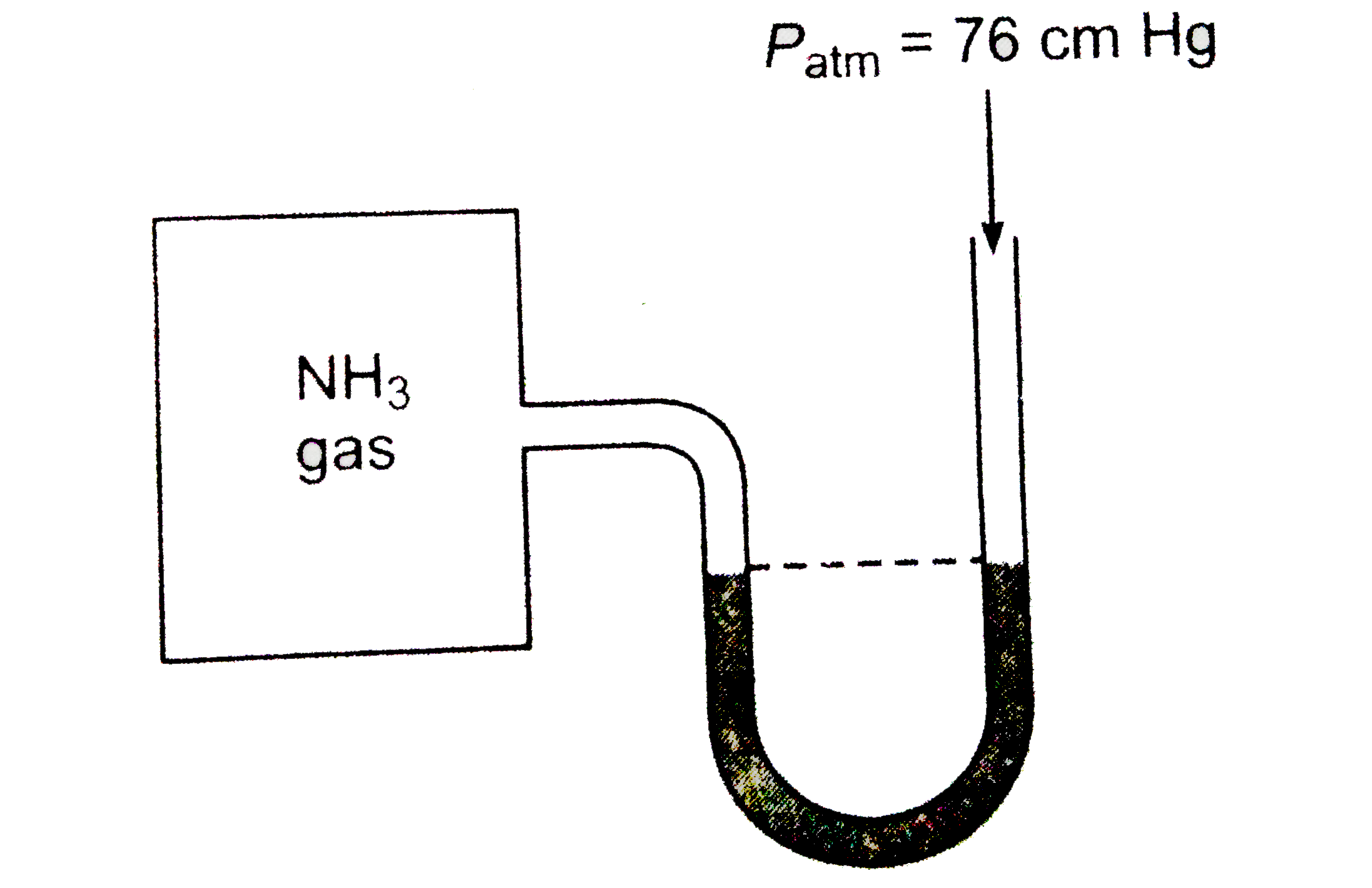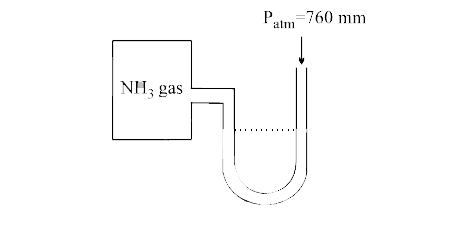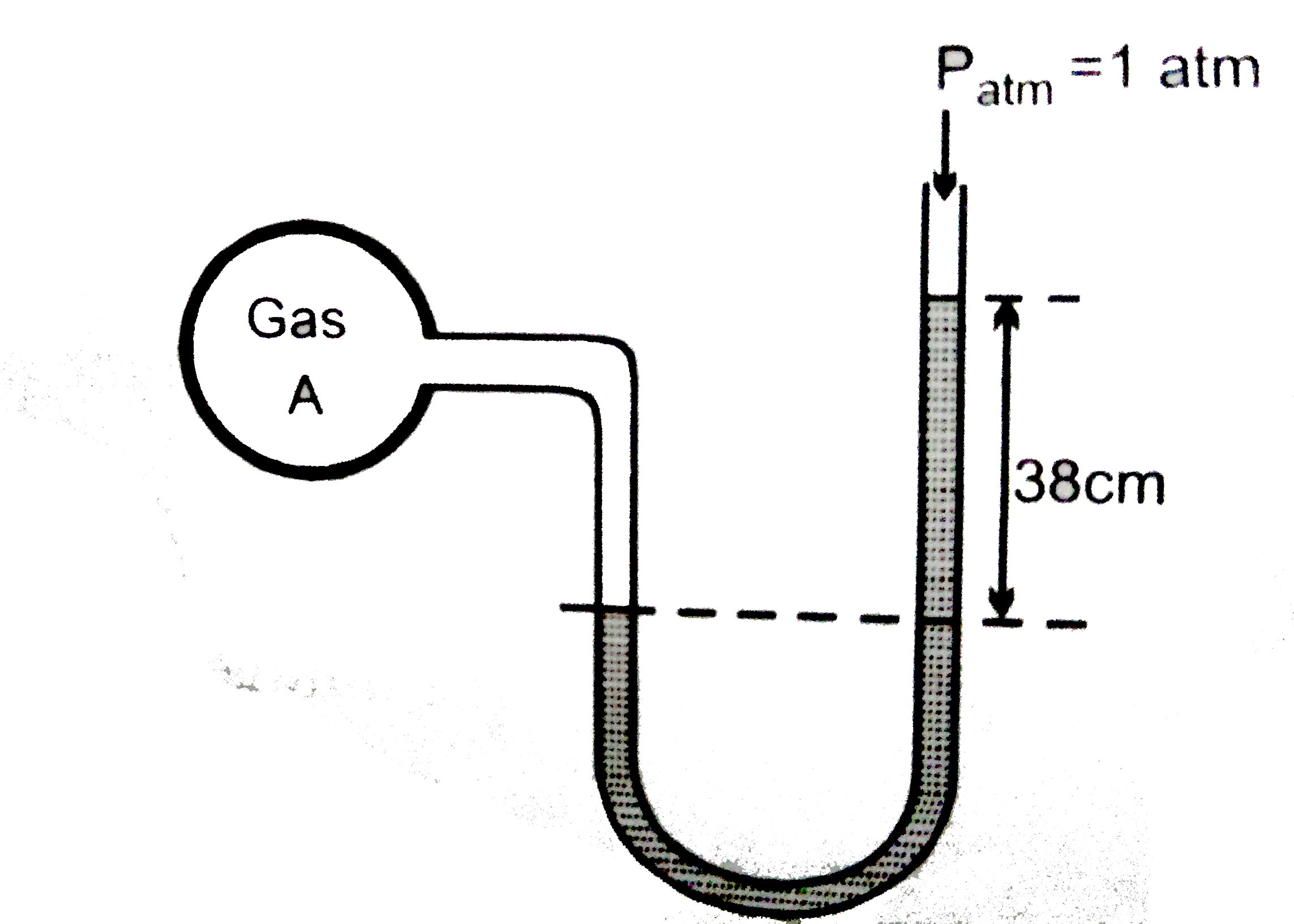A manometer attached to a flask contains with ammonia gas have no difference in mercury level initially as shown in diagram. After sparking into the flask, ammonia is partially dissociated as 2NH3 (g)→N2 (g)+3H2 (g) now it have difference of 6 cm in mercury level in two columns, what is partial pressure of H2 (g) at equilibrium?

9 cm Hg
18 cm Hg
27 cm Hg
None of these
The correct Answer is:a
(a) (a)2NH3(g)−−→N2(g)+3H2(g)Before sparking 76 00After sparking76−2x x3xat eqm
Increase in pressure 2x=6,x=3cmHg
Partial pressure of H2=3×3=9cmHg
Topper's Solved these Questions
- BOOK - NARENDRA AWASTHICHAPTER - GASEOUS STATEEXERCISE - Level 1 (Q.31 To Q.60)1videos
GASEOUS STATE
- BOOK - NARENDRA AWASTHICHAPTER - GASEOUS STATEEXERCISE - Level 1 (Q.121 To Q.150)1videos
GASEOUS STATE
- BOOK - NARENDRA AWASTHICHAPTER - ELECTROCHEMISTRYEXERCISE - Level 3 - Subjective Problems1videos
ELECTROCHEMISTRY
- BOOK - NARENDRA AWASTHICHAPTER - IONIC EEQUILIBRIUMEXERCISE - Exercise196videos
IONIC EEQUILIBRIUM
Similar Questions
A manometer attached to a flask contains NH3 gas have no difference in mercury level initially as shown in diagram.After the sparking into the flask, it have difference of19 cm in mercury level in two columns.Calculate % dissciation of ammonia
 View Solution
View SolutionAmmonia is prepared as
3H2(g)+N2(g)→2NH3(g)
What should be the sign of ΔS for this reaction? Explain.View Solution
Knowledge Check
- Question 1 - Select One
A manometer attached to a flask contains with ammonia gas have no difference in mercury level initially as shown in diagram. After sparking into the flask, ammonia is partially dissociated as 2NH3 (g)→N2 (g)+3H2 (g) now it have difference of 6 cm in mercury level in two columns, what is partial pressure of H2 (g) at equilibrium?
 A18 cm HgB9 cm HgC27 cm HgD24 cm Hg
A18 cm HgB9 cm HgC27 cm HgD24 cm Hg - Question 2 - Select One
The enthalpy of formation of ammonia is −46.0KJmol−1 . The enthalpy change for the reaction 2NH3(g)→N2(g)+3H2(g) is :
A46.0KJmol−1B92.0KJmol−1C−23.0KJmol−1D−92.0KJmol−1 - Question 3 - Select One
The enthalpy of formation of ammonia is −46.0KJmol−1 . The enthalpy change for the reaction 2NH3(g)→N2(g)+3H2(g) is :
A46.0 kJ mol−1B92.0kJmol−1C−23.0kJmol−1D−92.0kJmol−1
An open ended mercury mnometer is used to measure the pressure exerted by a trapped gas as shown in the figure. Initially manometer shows no difference in mercury level in both columns as shown in diagram.

After sparking A dissociates according to following reaction:
2A(g)→3B(g)+2C(g) ltbr> If pressure of Gas A decreases to 0.8 atm. Then:
(Assume temperature to be constant at 300K)View SolutionA open ended mercury manometer is used to measure the pressure exerted by a trapped gas as shown in the figure. Initially manometer shows no difference in mercury level in both columns as shown in diagram.

After sparking 'A' dissociates according to following reaction
A(g)→B(g)+3C(g)
If pressure of Gas "A" dissociates to 0.9 atm, then (Assume temperature to be constant and is 300 K)View SolutionA monometer contains a liquid of density 5.44g/cm3 is attached to a flask containing gas 'A' as follows

The initial pressure of gas A in th flask is:View SolutionWhich of the following is correct for the reaction? N2(g)+3H2(g)→2NH3(g)
View SolutionVapour density of the equilibrium mixture of the reaction
2NH3(g)⇔N2(g)+3H2(g) is 6.0 Percent dissociation of ammonia gas is :View Solution

